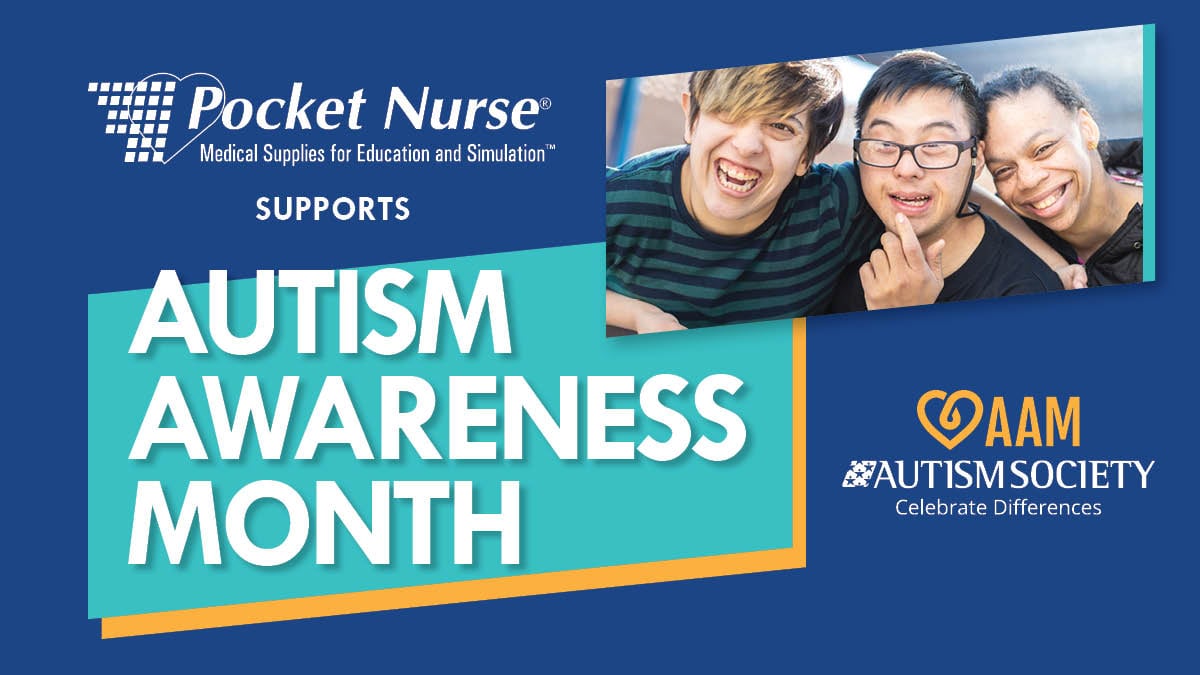
Autism is a neurodevelopmental disorder that affects a person’s social communications and behavioral domains. Autism Spectrum Disorder (ASD) is named that way because autism presents as a variety of different symptoms and severity levels. Currently in the United States about 1 in 59 children is diagnosed with autism, and approximately 2.21% of adults are autistic, according to the Centers for Disease and Prevention (CDC).
Diagnosis
Because of the current prevalence of autism, healthcare professionals, especially those who work with children, should be educated on the tools and resources for diagnosis, intervention, and treatment.
Children are evaluated for autism in early childhood, as part of pediatric well-child visits. Children are usually screened for developmental delays at 9 months, 18 months, and 2 years, and additionally screened for ASD at 2 years and 3 years of age. Early detection of developmental delays helps families access the resources they need to help their children progress.
The most well known ASD screening tool is a questionnaire called the Modified Checklist for Autism in Toddlers (2014), or M-CHAT™. It consists of 20 questions to be answered by parents at well-child visits between 16 and 24 months. If there are concerns, pediatricians will do a follow up interview and evaluation.
9 Tips for Better Communications
Hallmarks of ASD are difficulty with communication and social interactions. Nurse educators can use these nine tips to help students learn how to communicate better with people with autism.
- Don’t communicate for the person, communicate with them. This means, don’t finish a person’s sentences for them, or assume you know what they want. Exhibit patience and give them time to process what you are telling them.
- Get their attention. Although a person with autism may not make eye contact, they can indicate they are listening in other ways. Use their name and speak clearly when addressing them.
- Keep distractions to a minimum. Some people with ASD have trouble processing sensory input, so talking with them may require a quiet room with minimum distractions. Use a normal tone of voice and rate of speaking.
- Focus on the person. Make sure you are facing them while you are talking to them, and not doing other things that may turn your attention away. When a person can see your face, they can better understand what you are communicating.
- If you are not sure what the other person is saying, try to reword the communication. Make it clear that you want to understand them, but need their guidance. Use other cues if necessary, like a communication board.
- Talk directly to the person, not to a parent or caregiver.
- Visual cues, writing things down, and communication boards are all valuable ways to communicate. Even non-verbal people talk and understand language, it just may look different from the usual conversation.
- Give choices if open-ended questions aren’t answered. Instead of, “What is your favorite food?” you can say, “Do you like spaghetti or mac and cheese better?”
- Be as literal as possible. Some people have trouble making sense of idioms, so asking, “Is it raining cats and dogs outside?” or telling someone you are “shooting from the hip” may be misinterpreted.
The Autism Society of America focuses its efforts on spreading awareness, promoting acceptance, and igniting change for neurodivergent individuals. This year the theme for Autism Acceptance Month (also known as Autism Awareness Month) is “Celebrate Differences.” For more information about autism and how to create a more inclusive society for individuals with autism, see their website.
[PDF] “Nursing Management of Autism Spectrum Disorder in the School Age Child,” Texas Children’s Hospital.







